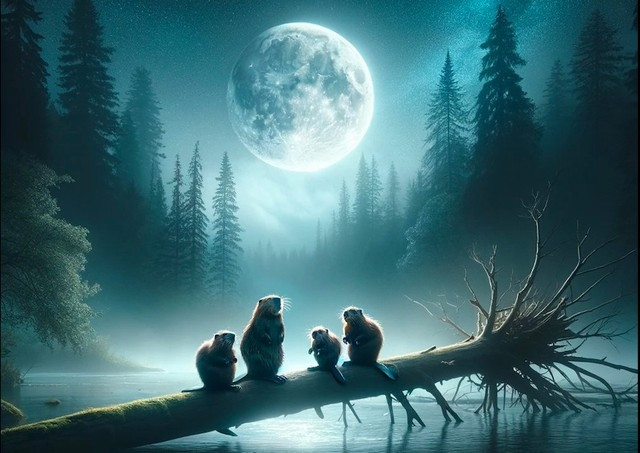
On Friday (Nov. 15) the moon will be full and is called the Beaver Moon in the night sky this week. The moon is opposite of the sun, as the sun sets the moon rises. It is also another supermoon meaning that the moon is closer to Earth resulting in a slightly increased brightness. It is called the Beaver Moon after the beavers who are building their winter dams now. Being nocturnal animals, they will work under the light of the full moon.
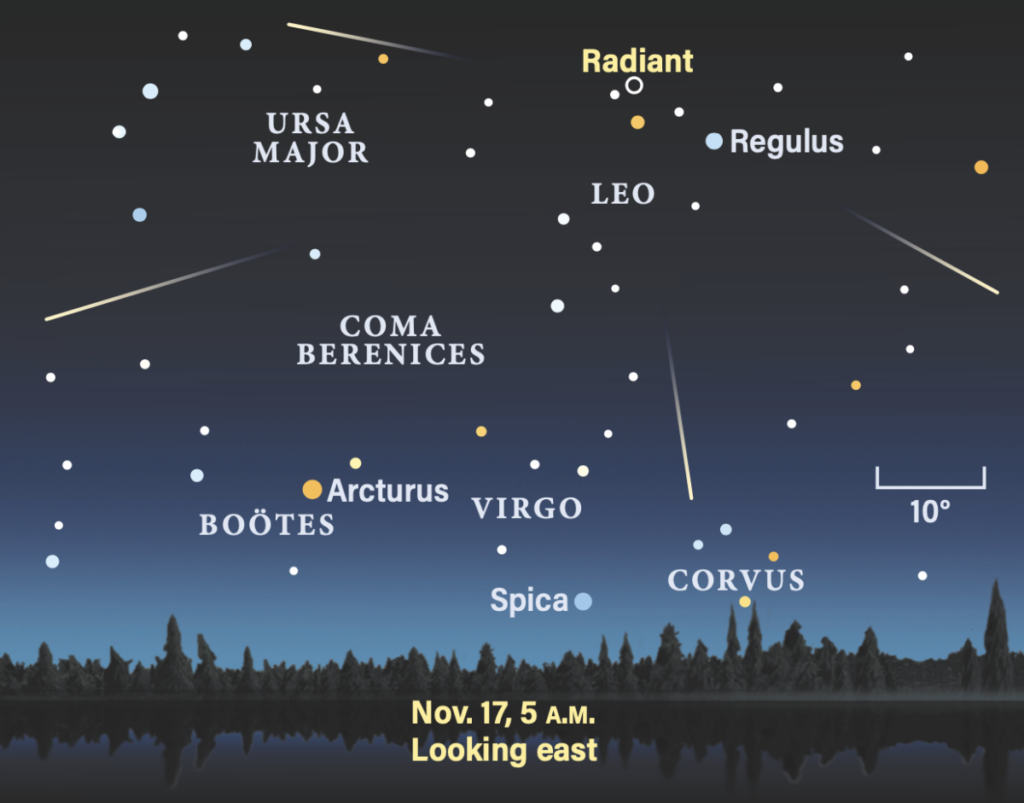
The Leonid’s meteor shower peaks this week. A few hours before sunrise is the best time to start observing this shower. The center of the shower is in the constellation of Leo the Lion. It is a smaller shower with around 10 meteors per hour peaking next week, however, the full moon will interfere with the shower only showing the brightest meteors.
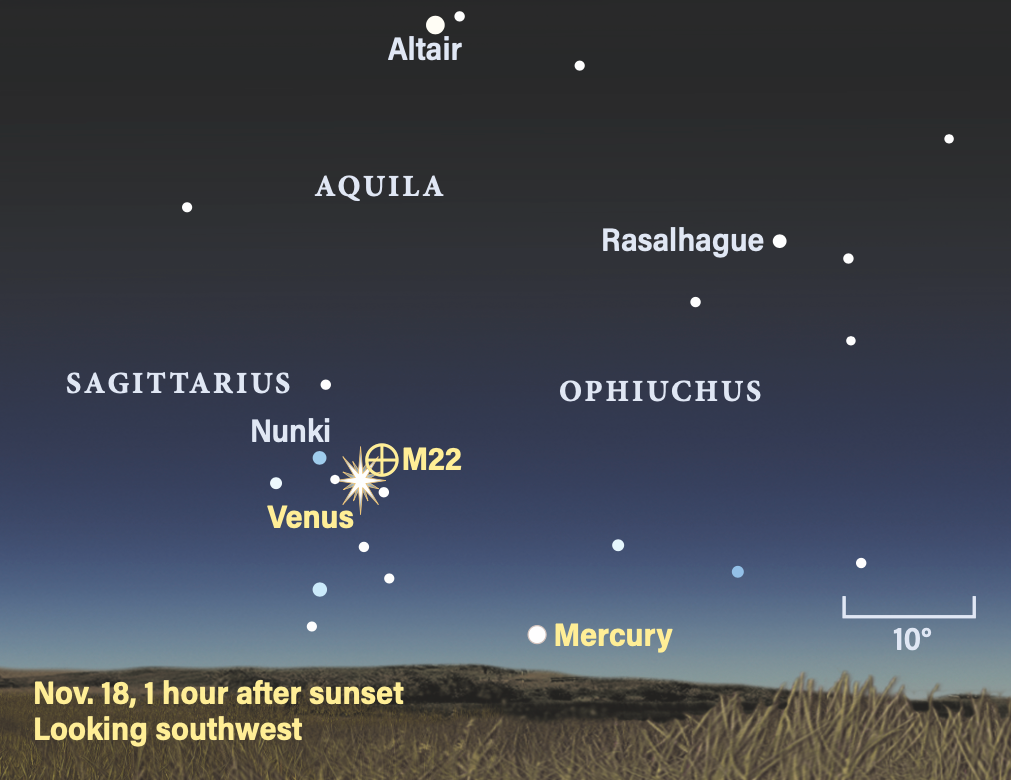
Mercury can be seen in the southwest after sunset, growing brighter. You will have to be quick to find it around 30 minutes after sunset. Mercury will be to the lower right of Venus. Venus shines 36 times brighter than Mercury. This is the farthest the little planet will get from the sun.
Venus, which is shining brightly on the southwestern horizon setting around twilight’s end. Many people are noticing it now since it gets darker sooner after the time change. Soon the planet will enter the constellation of Sagittarius. Venus will be a dazzling orange light close to the horizon due to our atmosphere’s light refraction around 10:00 PM. Venus is the second brightest object in the night sky after the moon. On a dark evening, Venus will cast a very faint shadow on objects. Venus set around 2 ½ hours after sunset.
Saturn is high above the southern horizon after dark, the brightest object in the area. It is in the constellation of Aquarius. As the Earth travels Saturn’s line to the sun, it will seem to travel backward (eastward). If you have a small telescope, you might glimpse its famous rings. Saturn is the brightest object in the area, so it is easy to identify below and right of the Great Square of Pegasus in the constellation of Aquarius. On Sunday night the moon will pass close to the planet’s south.
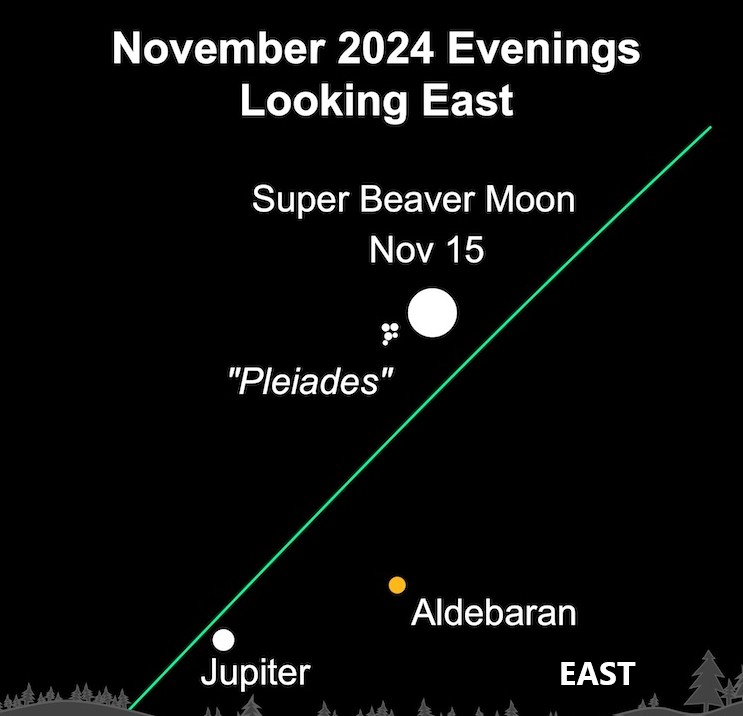
Jupiter is in the east around 10 PM which you cannot miss, shining as the third brightest object in our night sky. Also, the great constellation of Orion is rising at this time coming up from the eastern horizon. Jupiter lays between the horns of Taurus the Bull. During dawn, the planet is overhead, being one of the last night objects to fade during sunrise.
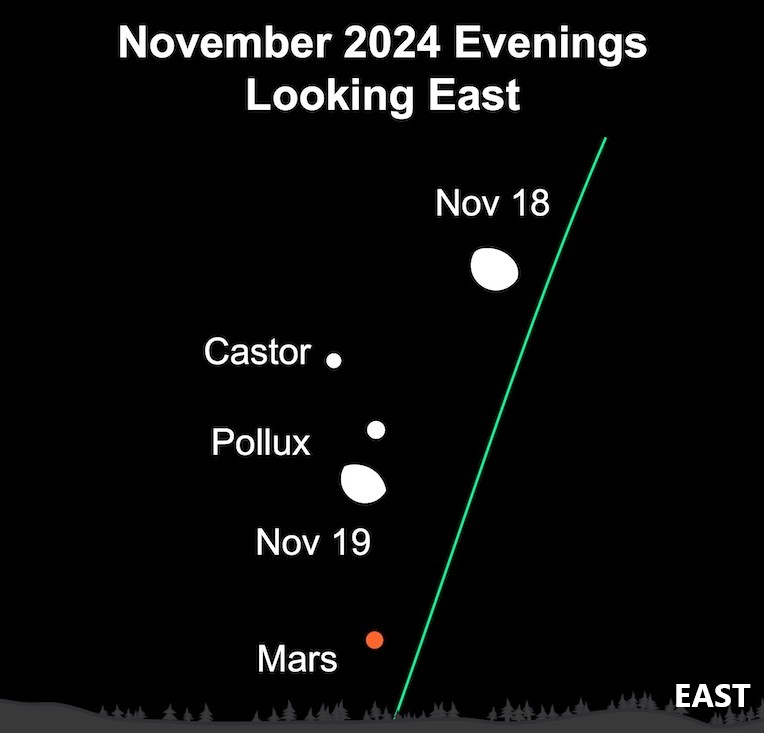
Mars is in the constellation Cancer rising shortly before midnight. It is close to two bright stars in Gemini called Caster and Pollux forming a semi-straight line. During the rest of the year, the red planet will brighten as it comes closer to Earth in its orbit. On Wednesday the moon passes to the north of the planet in the southwest.
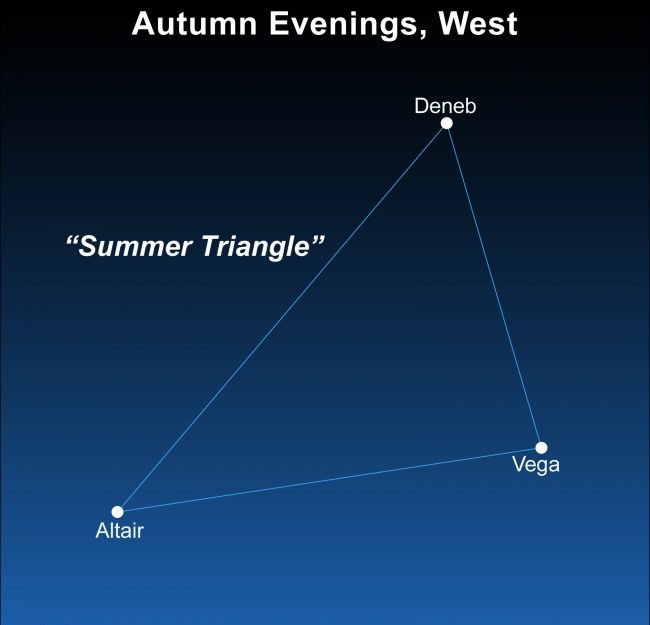
You can still see the summer triangle high overhead in the west with the bright star of Vega toward the bottom which will set first. It has seemed to be stalled but this is called the “Summer Triangle Effect”. As we go outside later, we are looking back at the star’s location toward summer. As the summer triangle sets the winter triangle rises.
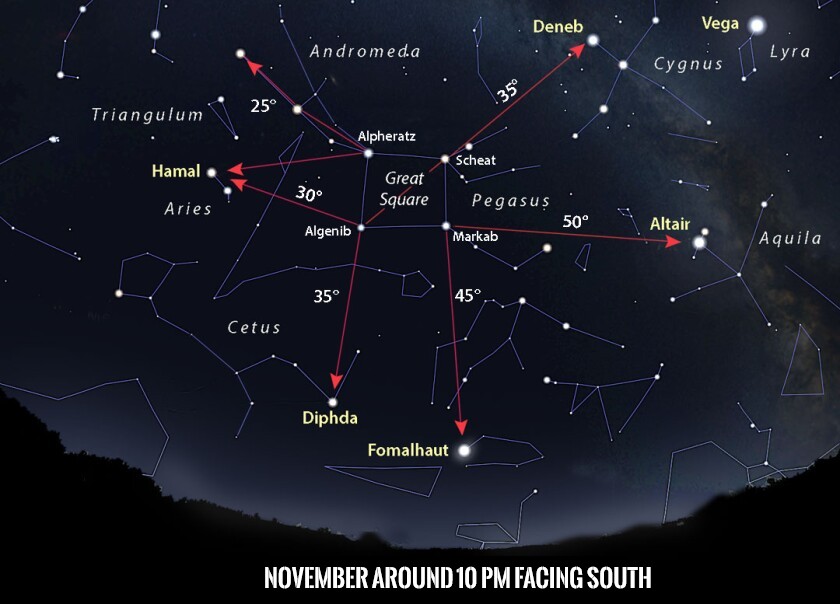
The Great Square of Pegasus is now overhead which is the 7th largest constellation. In Greek mythology, Pegasus is the winged horse, born from Medusa’s blood when she was slain by Perseus. It is associated with heroism and legend and is often depicted flying through the heavens.
While you look at Pegasus, notice a bright star to the south of the constellation called Fomalhaut. Fomalhaut is also called the loneliest star because is the only bright star in a wide stretch of sky. Sometimes call it the Autumn Star. From the Southern Hemisphere, you’ll look higher up to see Fomalhaut in your season of spring. In 2024, Fomalhaut isn’t so solitary, though! A bright planet, Saturn, appears near it in the sky. Of course, Fomalhaut will be the one that’s twinkling since Saturn will shine with a steady light.
Enjoy this cosmic spectacle throughout the week of November 22!
